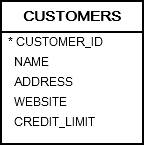Summary: in this tutorial, you will learn how to use the CREATE TRIGGER statement to create a new statement-level trigger in the database.
Introduction to Oracle Statement-level triggers
A statement-level trigger is fired whenever a trigger event occurs on a table regardless of how many rows are affected. In other words, a statement-level trigger executes once for each transaction.
For example, if you update 1000 rows in a table, then a statement-level trigger on that table would only be executed once.
Due to its features, a statement-level trigger is not often used for data-related activities like auditing the data changes in the associated table. It’s typically used to enforce extra security measures on the kind of transaction that may be performed on a table.
By default, the statement CREATE TRIGGER creates a statement-level trigger when you omit the FOR EACH ROW clause.
Here is the basic syntax of creating a statement-level trigger:
CREATE [OR REPLACE] TRIGGER trigger_name
{BEFORE | AFTER } triggering_event
ON table_name
[FOLLOWS | PRECEDES another_trigger]
[ENABLE / DISABLE ]
[WHEN condition]
DECLARE
declaration statements
BEGIN
executable statements
EXCEPTION
exception_handling statements
END;
Code language: PostgreSQL SQL dialect and PL/pgSQL (pgsql)Note that the meanings of each clause are already explained in the trigger tutorial:
Oracle Statement-level Trigger example
We’ll use the table customers from the sample database for the demonstration:

Suppose, you want to restrict users from updating the credit of customers from the 28th to the 31st of every month so that you can close the financial month.
To enforce this rule, you can use this statement-level trigger:
CREATE OR REPLACE TRIGGER customers_credit_trg
BEFORE UPDATE OF credit_limit
ON customers
DECLARE
l_day_of_month NUMBER;
BEGIN
-- determine the transaction type
l_day_of_month := EXTRACT(DAY FROM sysdate);
IF l_day_of_month BETWEEN 28 AND 31 THEN
raise_application_error(-20100,'Cannot update customer credit from 28th to 31st');
END IF;
END;
Code language: PostgreSQL SQL dialect and PL/pgSQL (pgsql)Let’s examine the trigger.
First, create a new trigger customers_credit_trg. The OR REPLACE modifies the trigger if it already exists:
CREATE OR REPLACE TRIGGER customers_credit_trg
Code language: PostgreSQL SQL dialect and PL/pgSQL (pgsql)Next, instruct the Oracle to fire the trigger only before update event for the credit_limit column of the customers table. If you update values in other columns rather than the credit_limit column, the trigger will not execute.
BEFORE UPDATE OF credit_limit
ON customers
Code language: PostgreSQL SQL dialect and PL/pgSQL (pgsql)Then, declare a variable to hold the current day of the month:
DECLARE
l_day_of_month NUMBER;
Code language: PostgreSQL SQL dialect and PL/pgSQL (pgsql)After that, get the current day of the month using the EXTRACT() function:
l_day_of_month := EXTRACT(DAY FROM sysdate);
Code language: PostgreSQL SQL dialect and PL/pgSQL (pgsql)Finally, check if the current day of the month is between the 28th and 31st, and use the procedure raise_application_error to raise a user-defined error:
IF l_day_of_month BETWEEN 28 AND 31 THEN
raise_application_error(-20100,'Cannot update customer credit from 28th to 31st');
END IF;
Code language: PostgreSQL SQL dialect and PL/pgSQL (pgsql)Testing the Oracle statement-level trigger
The following statement uses the UPDATE statement to increase the credit limit of all customers 10%:
UPDATE
customers
SET
credit_limit = credit_limit * 110;
Code language: PostgreSQL SQL dialect and PL/pgSQL (pgsql)Oracle issued the following error:
ORA-20100: Cannot update customer credit from 28th to 31st
ORA-06512: at "OT.CUSTOMERS_CREDIT_TRG", line 8
ORA-04088: error during execution of trigger 'OT.CUSTOMERS_CREDIT_TRG'
Code language: PostgreSQL SQL dialect and PL/pgSQL (pgsql)Note that Oracle automatically rollbacks the update because we call the raise_application_error procedure inside the trigger.
In this tutorial, you have learned about the Oracle statement-level triggers and how to use the CREATE TRIGGER statement to create a new statement-level trigger in the database.